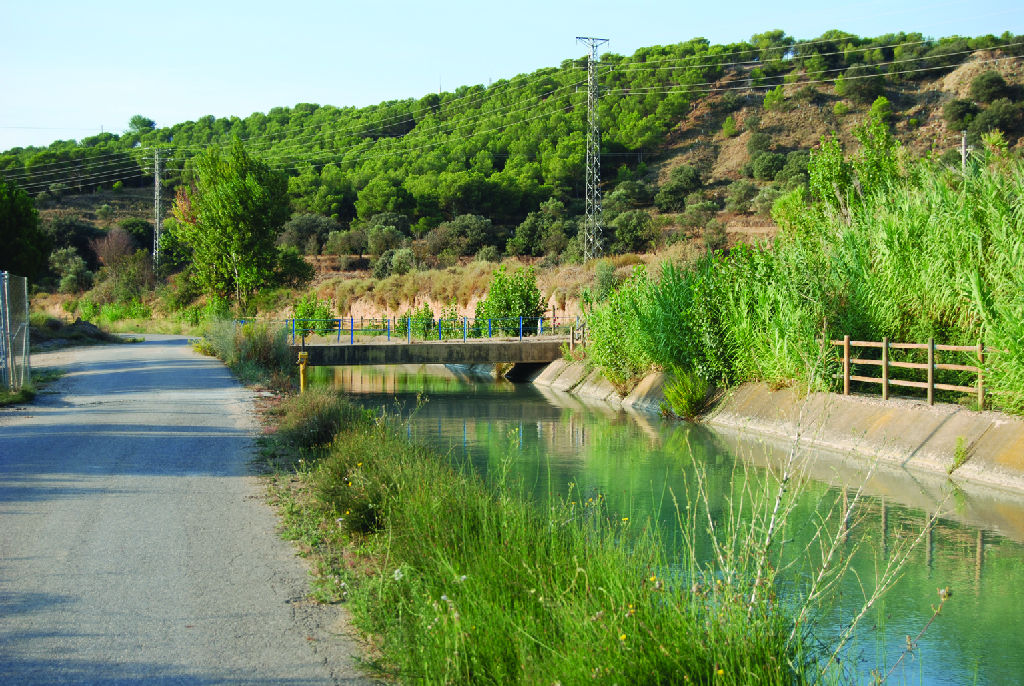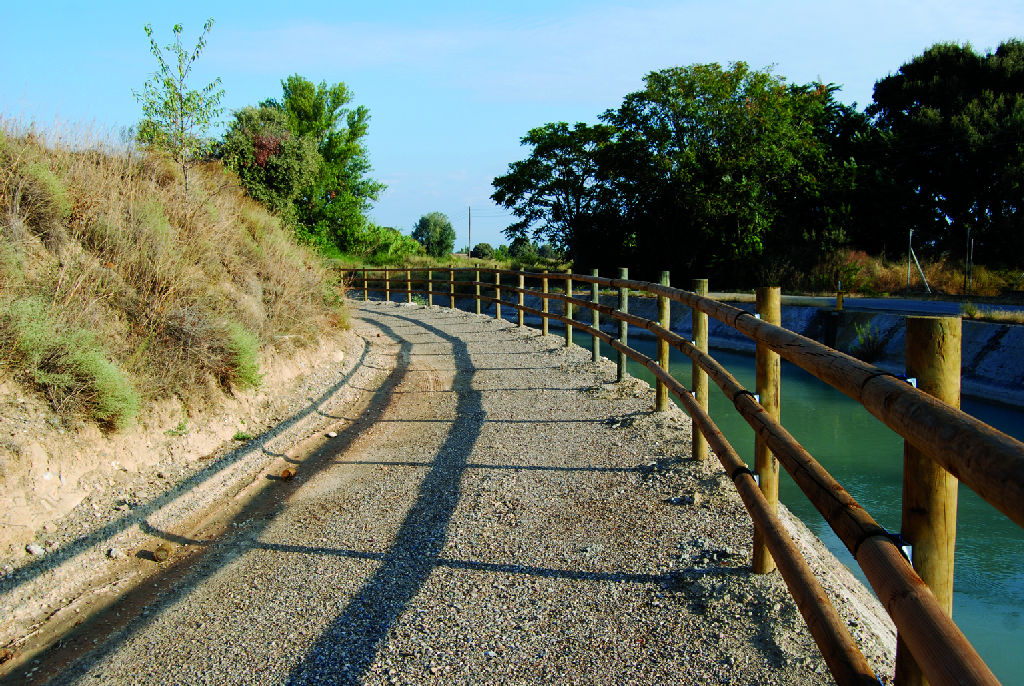- Home
- Rural Development
- Nature Trails
- Nature Trails
- Northeast Sector
- La Sierra de San Quílez
Sierra de San Quílez Nature Trail
Description

Legends of miraculous rainfall in a cultivated landscape
The Sierra de San Quílez Nature Trail in Binéfar (Huesca) is a route that serves as a communication axis between the most outstanding points of interest in this region, as well as inviting trail users to discover the rich biodiversity of this agricultural region.
This Nature Trail begins next to the town of Binéfar, next to a roundabout after passing under the N-240 highway via the Camino del Pueyo. Heading south, for a few hundred metres, the Trail runs alongside the road, passing it on the left until it alters its course via a track that emerges from the right, near an irrigation pool . The track heads towards the A-140 highway but, before reaching it, it takes the next track on the right, leading to the Sierra de San Quílez.
From this point onwards, it makes its way through a farming area, passing a turn-off on the right to continue straight ahead, among holm oaks (Quercus ilex), almond trees (Prunus dulcis) and irrigation crops. It then continues along a dirt surface when the Trail draws close to the Zaidín canal.
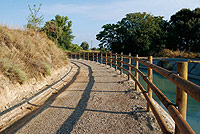
After crossing this canal via a bridge, you can continue to the right along a fork in the Trail marked off by a wooded fence that protects trail users from the proximity of the water. Always keeping the course of the canal on your right, continue along this rural olive-tree and cornfield-filled scenery, passing several walkways that you should not cross. The end of the fence and an upward track that branches off to the left mark the end of this section of the Trail.
In order to continue along the route of the Sierra de San Quílez Nature Trail, you should go back on your steps as far as the bridge where you crossed the canal and begin the ascent to the viewpoint of the Sierra de San Quílez and the Chapel of San Quílez.
The Trail runs between Aleppo pines (Pinus halepensis), trees that have adapted in an extraordinary manner to this region’s climate, until it reaches the viewpoint of the Sierra de San Quílez. From this point, visitors can enjoy marvellous views of the valley.
A little further on, you will come to the Chapel of San Quílez, which the inhabitants of Binéfar visit in a popular pilgrimage every Easter Monday. From there, you can enjoy a spectacular panoramic view of the western face of the Sierra.
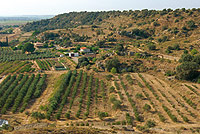
Continuing straight ahead, a recreational area outfitted with tables and swings allows walkers to have a rest at the same time as discovering a little more about the secrets of the natural environment of the area, thanks to some interpretation panels. A few metres on, you reach a car park, where a beautiful specimen of a kermes oak stands, and you pass by a path that leads directly down to the canal.
The route continues until you reach a wider part where a track merges on the left-hand side. In this place, there is an olive tree, a symbol of the afforestation work of the associations and inhabitants of Binéfar, as is explained on a commemorative plaque by Félix de Azara, the 2001 National Environment Award winner. On the left, you can enter a small house with a barbecue and an untreated water fountain, which offers a bird’s eye view of the surrounding area.
After returning to the track and continuing straight ahead, the Trail ends after a little less than a kilometre on reaching a track that descends directly to the Zaidín canal, where you can access the section of the pathway that runs parallel to it.
Sites of interest
Profile
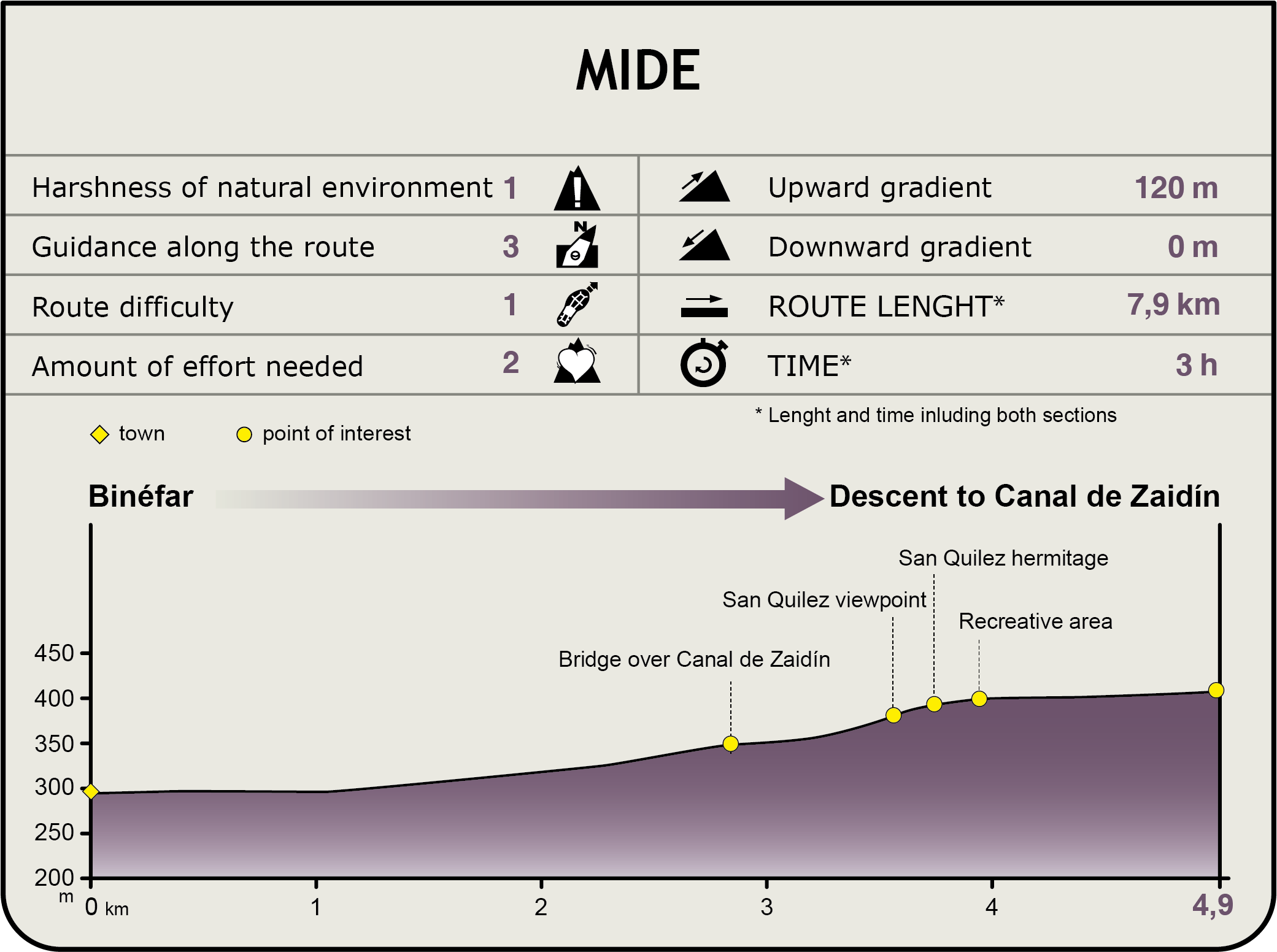
MIDE (Method for the Information of Excursions)
Featured
Further information
The Virgin of El Romeral
In 1690, as a consequence of a devastating and prolonged drought, the lands of Binéfar suffered a long period of shortages and famine.
This episode was so severe that the inhabitants of the town begged God for mercy and the long-awaited rainfall so that the parched crops could flourish. Chronicles tell that their prayers were so insistent that the Virgin of El Romeral delivered a downpour which sufficed for the damaged crops to recover.
From then onwards, the people of Binéfar made a vow to visit the Virgin of El Romeral, venerated in the neighbouring Chapel of El Romeral, every first day of May to thank her for her mercy and to celebrate the beginning of the traditional rainy season.

